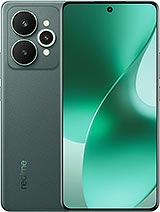Realme Narzo 80 Pro alternatives
Tap above to see alternatives.
Samsung Galaxy M56 alternatives
Tap above to see alternatives.
Realme Narzo 80 Pro

Realme Narzo 80 Pro
-
Dimensity 7400
4 nm
-
6000 mAh
80W
-
6.72"
1080 x 2392 pixels
-
50 MP
4K@30fps
-
Specs

Samsung Galaxy M56

Samsung Galaxy M56
-
Exynos 1480
4 nm
-
5000 mAh
45W
-
6.74"
1080 x 2400 pixels
-
50 MP
4K@30fps
-
Specs

4x2.6 GHz Cortex-A78
4x2.0 GHz Cortex-A55
4x2.75 GHz Cortex-A78
4x2.0 GHz Cortex-A55
8GB 256GB (UFS 3.1)
12GB 256GB (UFS 3.1)
8GB 256GB (UFS 3.1)
f/1.8, 26mm (wide), 1/1.95", 0.8µm, PDAF, OIS
2 MP
f/2.4, (depth)
f/1.8, (wide), PDAF, OIS
8 MP
f/2.2, (ultrawide)
2 MP
f/2.4, (macro)
1080p@30/60/120fps
1080p@30/60fps
f/2.4, (wide)
f/2.2, (wide)
1080p@30fps
SIM1: Nano, SIM2: Nano
SIM1: Nano, SIM2: Nano
9 5G bands
n1, n3, n5, n8, n28, n40, n41, n77, n78
8 5G bands
n1, n3, n5, n8, n28, n40, n41, n78
In this performance comparison, the Realme Narzo 80 Pro with its MediaTek Dimensity 7400 (4nm) performs better than the Samsung Galaxy M56 with the Exynos 1480 (4nm), thanks to superior chipset efficiency.
Samsung Galaxy M56 launched with Android 15 and will receive updates until Android 21, whereas Realme Narzo 80 Pro launched with Android 15 and will get Android 17. Samsung Galaxy M56 will get security updates until 2031 (approx. 6 years), while Realme Narzo 80 Pro is supported till 2028.
Both Realme Narzo 80 Pro and Samsung Galaxy M56 feature AMOLED displays, offering vibrant colors and deeper blacks. Both smartphones offer the same 120 Hz refresh rate. Realme Narzo 80 Pro also boasts a brighter screen with 4500 nits of peak brightness, enhancing outdoor visibility. Both phones have the same screen resolution.
Realme Narzo 80 Pro comes with a larger 6000 mAh battery, which may offer longer usage on a single charge. Realme Narzo 80 Pro also supports faster wired charging at 80W, compared to 45W on Samsung Galaxy M56.
Realme Narzo 80 Pro includes an IP69 rating, while Samsung Galaxy M56 lacks an official IP rating.
¹ Scores can vary even with the same chipset due to RAM, thermals, and software optimization.










